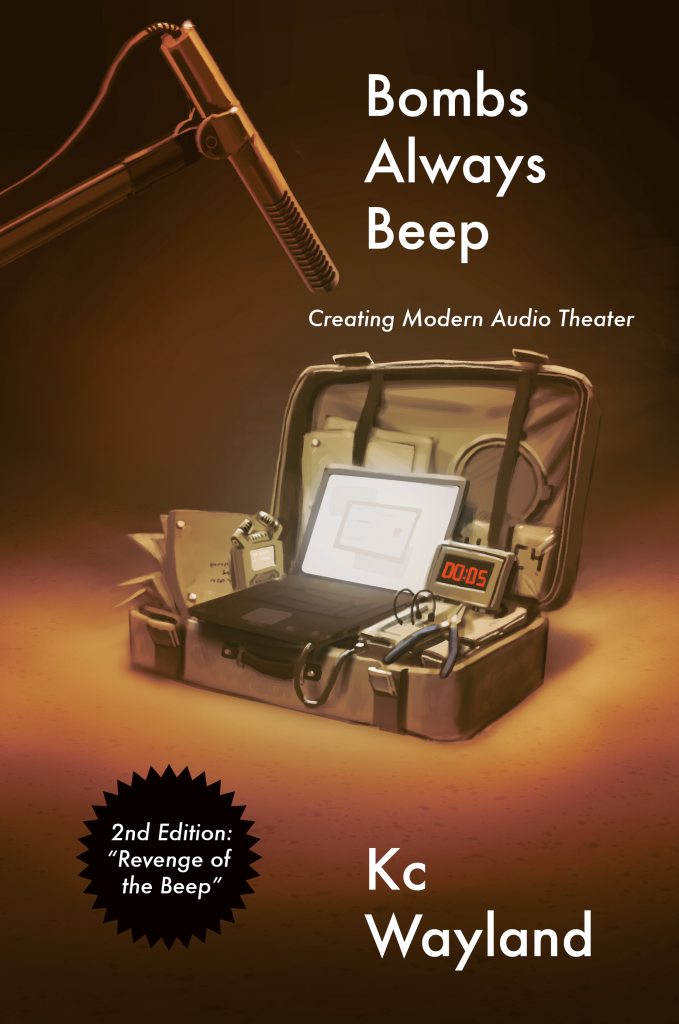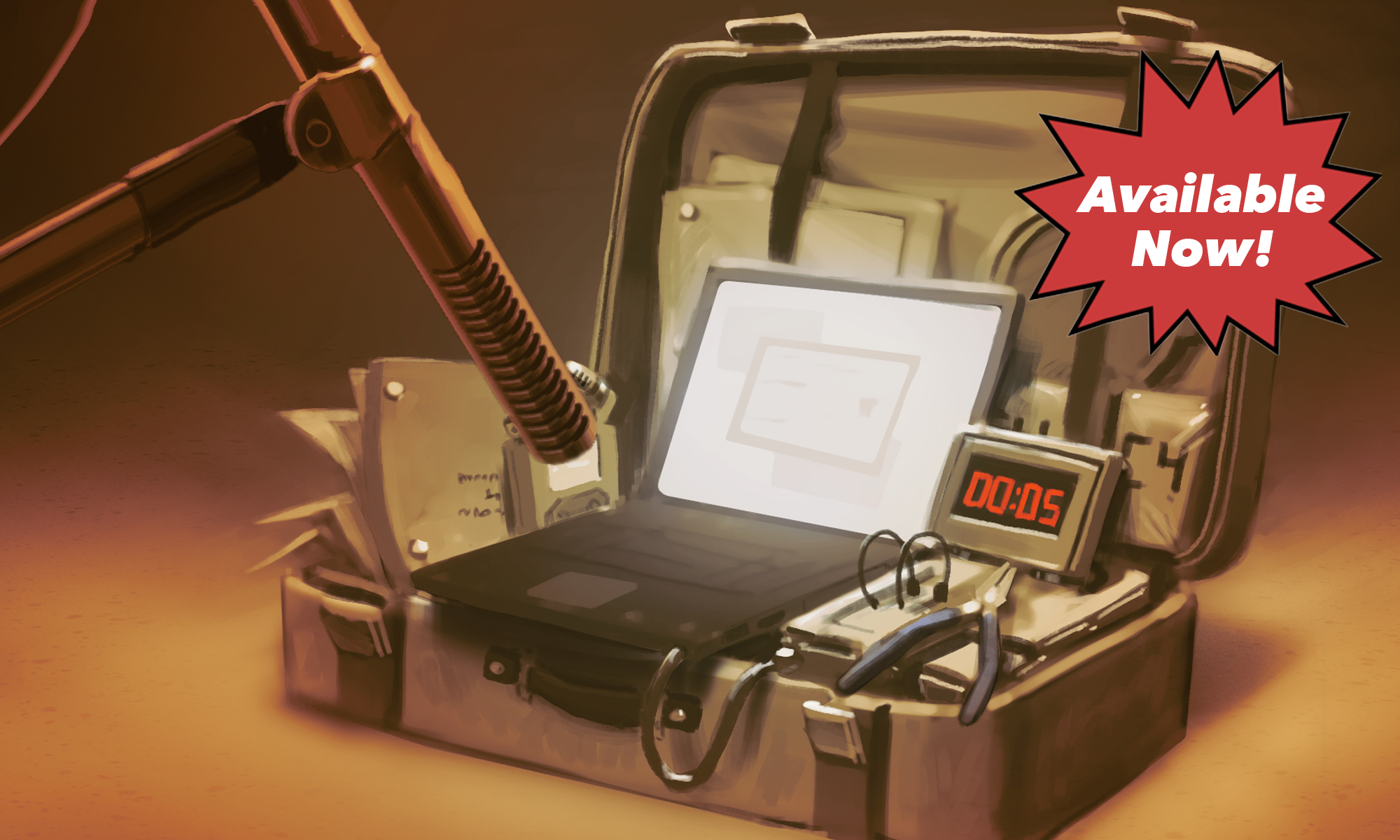Welcome to Bombs Always Beep – Creating Modern Audio Theater – 2nd Edition “Revenge of the Beep”
By Kc Wayland – Edited by Wendy Lucas & Shanti Ryle
2nd Edition Ebook and Print version on sale now!

Special Price $39.99 $19.99
Over 20,000 new words added (roughly 50 pages) covering the new and expanded topics of:
Storytelling:
- 1.2a Pacing and Tension
- 1.2b The Outline
- 1.4a Character and Story Wrappers
- 1.4b Natural Character Evolution
Storytelling Through Audio:
- 2.1a Audio Aesthetics and The Sound Palette
- 2.3a Creating a Scene for Audio
- 2.3b Audio Scene Transitions
Actors
- 5.4a – Casting Audio as the Actor or Director
- 5.4b – Keys to Success Working with Hollywood Talent
- 5.9a SAG/AFTRA Rates
The Tech Side of Recording
- 9.2a Hierarchy of Sound Recording
Post Production
- 10.2a Post Software
- 10.3a Noise Reduction
- 10.3b Advanced Audio Editing Samples
- 10.6a Performance Selection and the Editor
- 10.6b The Pacing Cut
- 10.8a Foley vs SFX
- 10.9.4a Audience Digestion, Limitations, Lufs, and Levels
- 10.9.4b Dissonant Sound
- 10.9.4c Mixing to the Voice
- 10.10.1a Sampled Foley
2nd Edition Print Version now available:
Other ebook Vendors:
(NOTE, 2nd edition not available on Apple Books Yet)
Overview
Bombs Always Beep: Creating Modern Audio Theater is an exploration of the entire production process of constructing modern audio narratives. Podcasts have facilitated a renaissance of independent audio-only series, and they are expanding at a rapid rate. Currently, there are no other books available that explain in detail the inner workings of creating audio narratives by way of the new podcast distribution system. Most literature focuses on the dated production and writing methods from the Golden Age of Radio or the BBC radio distribution models. However, entire companies are now being built upon contemporary storytelling production techniques, funded by crowdsourcing and advertising. This book covers the process from beginning to end: How to create compelling modern audio theater and distribute it online.
Chapter Breakdown
What is “Audio Drama”?
This first section is the introduction to the medium, a brief history, and an in–depth analysis of the various styles of audio-only entertainment currently on the market.
Chapter 1 – Storytelling
This first chapter demonstrates how to create a story that’s told through only audio means. Every aspect of a sample story is flushed out in a unique way through a Story Workshop. The building of a story then grows from the exploration of natural character motivation. Lastly, this story section contains tips for exploring and writing onto the page, and helpful brainstorming techniques.
Chapter 2 – Storytelling through Audio
What are the things that are unique to audio-only entertainment that need to be considered when writing a story? What are other aspects that help enforce the visualization of the story? Environments and setting choices become the equivalent to “framing” in cinematography. Lastly, the section ends with the guide on how to transfer all of these ideas onto the script page formatted specially for audio-only productions.
Table of Contents
- Chapter Outline
- Foreword
- What is Audio Drama?
- Storytelling
- 1. Choosing your Story
- 1.1 Titles
- 1.2 Creating a Compelling Story
- 1.3 Story Workshop
- 1.4 What’s in a Name?
- 1.5 Conflict is Key
- 1.6 Motivation Moves the Story
- 1.7 Conceiving Action
- 1.8 Words on the Page
- 1.9 Workshop Result
Current Version: 2.0 – Updates to the book will be made in the future as techniques and technology advances.
To receive updates on the book , please enter your e-mail below.





